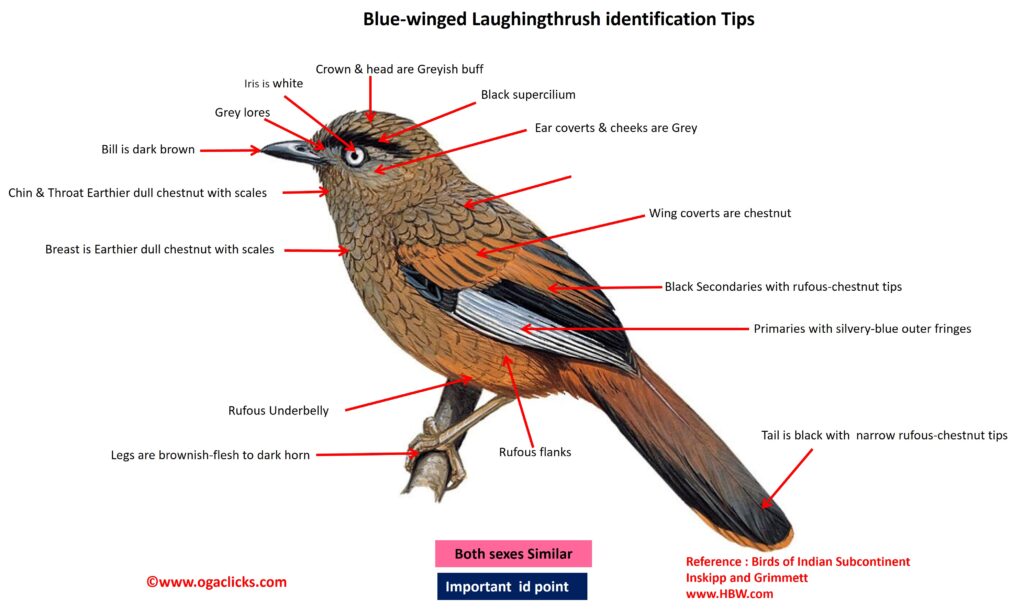
Blue-winged Laughingthrush Garrulax squamatus
Etymology:
- Garrulax : Latin word garrulous –babbling, chattering; ax – inclining towards
- Squamatus : Latin word for scaled derived from squama – scale
Vernacular Name : Lepcha: Tarmal-pho, Bhutia: Nabom
Distribution : Resident of Himalayas and North East India
Description: It has size of 22–25 cm; wt. of 70–84 g. It is a robust, medium-sized, dark-scaled laughingthrush with black crownstripe, whitish eyes, rusty and blue-white wingpanels and rusty-tipped tail. The male has lores and feathering around eye as greyish-buff under broad black lateral crownstripe. The body is ochrous-tinged olive-brown with narrow blackish scaling, bolder on lower upperparts, grey tinge on head, scaling weakening and disappearing on lower underparts, where colour shades to earthier dull chestnut, also on uppertail-coverts. The flight-feathers and tail mostly blackish. The tail is narrow rufous-chestnut tips, wing with rufous-chestnut greater coverts and outer fringes of secondaries, blackish primary coverts, silvery-blue outer fringes of primaries. The iris is white; bill is dark brown; legs are brownish-flesh to dark horn. The female is like male, but more rufescent on face, back and underparts, flight-feathers and tail dark brown where male blackish. The juvenile is like female but more rufescent, with very weak scaling above and none below, weak supercilium, bill mainly pale, eyes are brown.
Habitat: It is found in dense understorey and undergrowth of more open broadleaf evergreen forest, secondary growth, scrub and bushes bordering forest, bamboo, often near streams. It is found at 900–2440 m.
Food habits: It eats insects, berries, fruits and seeds. Usually found in pairs or in small family parties, occasionally singly. It keeps close to ground in dense cover; very skulking.
Breeding habits: They breed in Apr–Jul. The nest is a bulky, compact or loose cup, made of dry bamboo or other leaves, creepers, tendrils, fine twigs, grasses, roots and moss, lined with black fibrous roots, black fibres and rootlets, placed above ground in bush or tangle of creepers. They lay a clutch of 2–4 eggs. Brood parasitism done by Chestnut-winged Cuckoo.